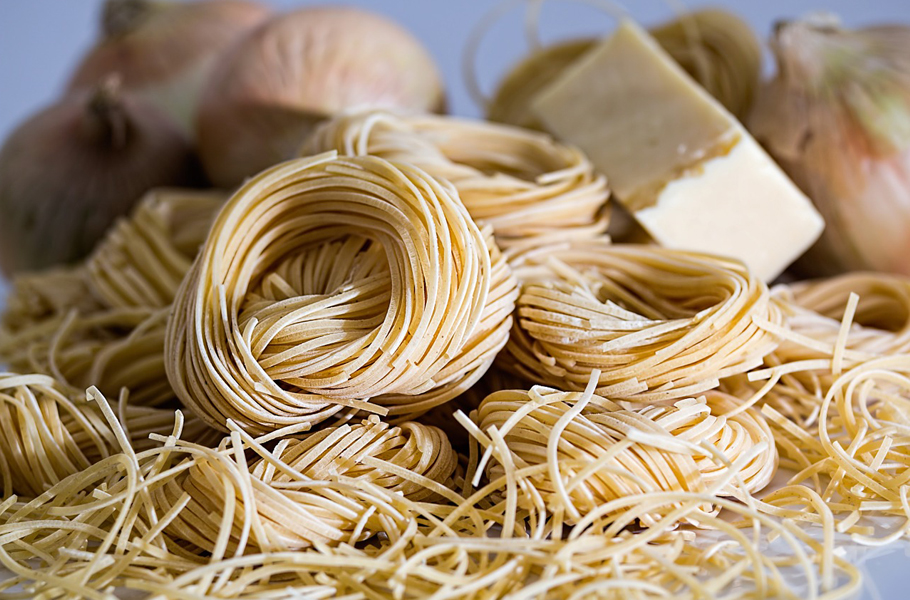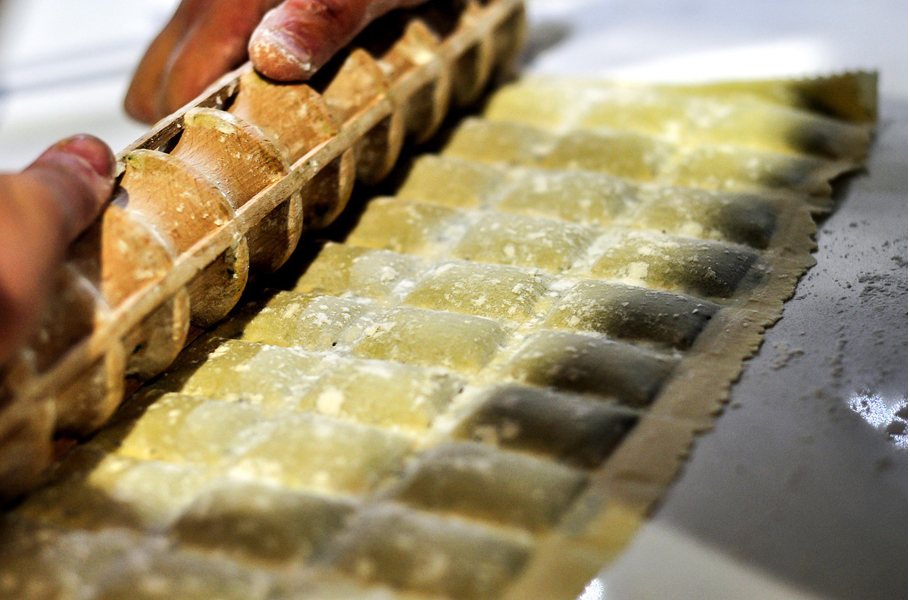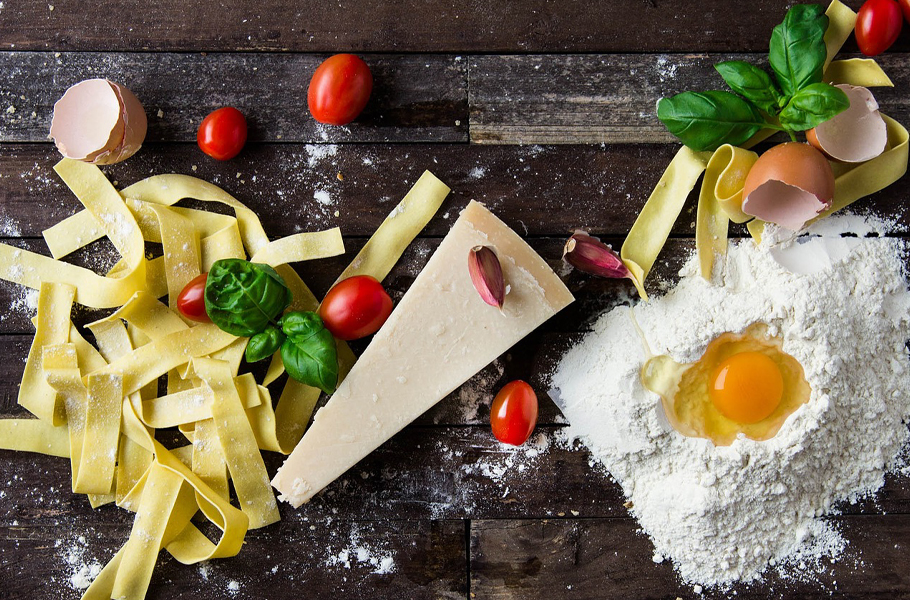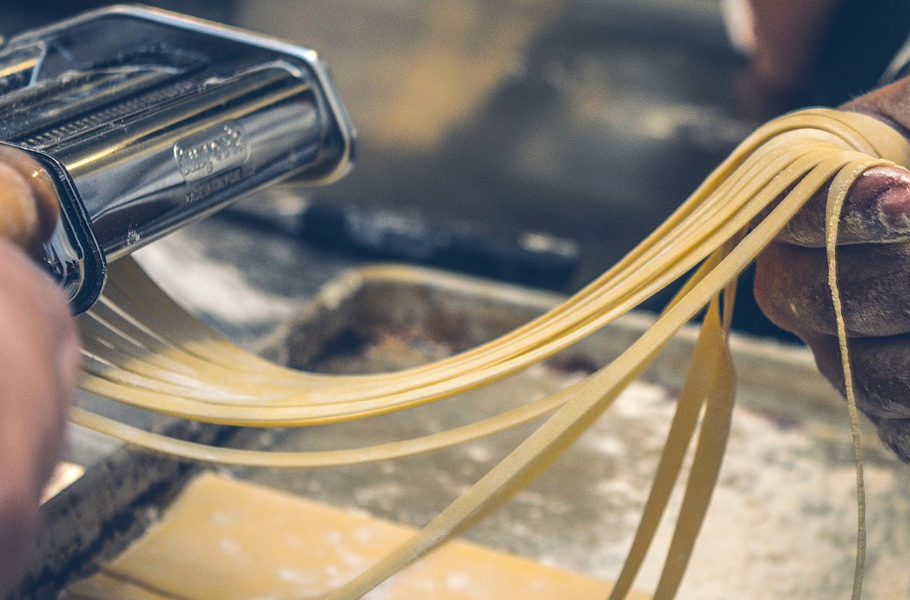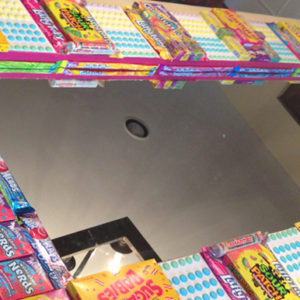So, here’s kind of a weird thing about me: rather than following recipes, I read cookbooks cover to cover—everything from the table of contents to the history of the author to that all-important detail: how to make the food (or the homemade pasta, in this case). I guess I want to understand the how and why of things, the working end.
Treating cookbooks more like novels helps me become more creative in my own cooking. I learn so much from these chefs, from technique to why certain ingredients were selected for each particular recipe.
Homemade Pasta Tips from the Masters
Recently, I went on one such reading adventure with Mastering Pasta: The Art and Practice of Handmade Pasta, Gnocchi, and Risotto by Marc Vetri with David Joachim.
As I flip through all these amazing recipes, I can feel my butt and thighs getting bigger already. But that’s okay. It’s going to be worth every bite.
Vetri has studied and devoted himself to discovering the endless possibilities of pasta. It’s been a bit of a life-long love affair for him, which he explores in the intro to his mouth-watering book.
What’s not to love about someone who not only talks passionately about homemade pasta, but also explains everything that surrounds it—right down to the BB King album that goes with it? (Naturally, I’ve already decided to buy a record player before I start putting his recipes and education to the test.)
And let’s not forget the wine… man, do I love Italians.
How Not to Make Pasta at Home
Let me be clear: making homemade pasta is actually incredibly simple. But when you’re trying to do it on a Tuesday night after work and before the kids finish their homework and go to bed, you really aren’t giving it a fighting chance. Trust me. I’ve tested this approach for you in advance. Unsuccessful.
If you’re making pasta from scratch, you’re doing it for the love of cooking and food. And you’ll do best to take it on when you have time to enjoy the process and the meal.
The beauty of making pasta is that you can always dry it for future use. This way, on the next stressful Tuesday night, you’re prepared with one of the world’s fastest & easiest meals – extra delicious style.
But please note: if you make it and cook it immediately, you’ll be ruined forever for the bought-from-the-grocery-store variety. D. Lish.
I have made fresh pasta many times, but after reading to only page 7 of Mastering Pasta, I’m realizing what a complete novice I am.
I was just using whatever flour was in my pantry, creating my trough, dropping the eggs in, and making my pasta. Some batches turned out better than others, and now I have some answers as to why.
4 Tips for Making Pasta at Home
Following are 4 simple tips to improve the quality of your homemade pasta:
Pasta-making success depends on many factors, like humidity
How annoying is that?
Moisture is a huge factor in baking, so it makes sense that the humidity in your kitchen makes a difference. In this case, it’s very helpful to be a person (like yours truly) who doesn’t like to measure, because the key is to test and tweak – to get a sense for how good pasta dough should feel, and manage moisture content accordingly.
Does your homemade pasta sometimes get sticky? It might be more humid in your kitchen than your recipe assumes. In the winter, on the other hand, I need to add more liquid when making pasta, since the air is so dry.
Unless it’s a pasta emergency, don’t settle for whatever flour is in the pantry
Moving forward, the basic flour I’ll be socking for pasta making is what they call tipo 00 (type 00). The number indicates how finely ground the flour is.
A tipo 00 flour is ground to the consistency of talcum powder and is suggested for soft, fresh pastas.
But you can also make fresh pasta with a tipo 0 flour, which is a bit coarser.
Check the flour protein level
As a rule, it’s a flour’s protein level that affects texture. The lower the protein, the softer the texture.
The dried pasta that you buy at the store is made with high-protein wheat, which helps it keep its shape when it dries.
Be realistic, or mill your flour. Your call.
When the talented Marc Vetri suggested that the best pasta is a product of freshly milled flour, I questioned going any further.
I guess my pasta will never be the best, but I’m totally okay with that. Because milling flour is 1 step too far for me, personally, at this point in my life.
Time to Make Pasta (a.k.a. Get Your Hands Dirty)
Can we get to the pasta making now? Yes!
Here’s how we do it:
- Put a healthy splash of olive oil into a bowl.
- Add six eggs and a couple tablespoons of water.
- Whisk with a fork.
- Add about 4 cups of flour. I’m going to try Vetri’s flour suggestions, but you can also just use regular flour for this basic recipe.
- Mix the dough by hand. This will take about 5 minutes. (Have I mentioned that you cannot make pasta without getting your hands dirty?)
- Let the dough rest for 20-30 minutes.
- Roll out the dough with a rolling pin, pinch into pieces, or use a machine to roll it out (my personal favorite).
- Cut out by hand or use a cutter.
Now boil of big pot of water, and toss the pasta in with a few tablespoons of kosher salt. After a few minutes, test for doneness. As much as I would love to give you an exact time, it varies widely based on how you cut or form your pasta. But here’s what I can tell you for sure: it cooks much faster than store-bought pasta.
Drain it, add your sauce (hopefully some from the tomato canning you did last fall), and TA-DA!
You are so amazing. Go tell all your friends that you make pasta from scratch, and you don’t understand why they don’t.
Finalmente…
As for the rest of this cookbook, let me just say that the recipes are amazing. And the education in the art of making pasta is easy to understand and has absolutely inspired me to try different methods, including flavored waters and egg-yolk pasta to start.
Buon appetito!
Categories: Create





